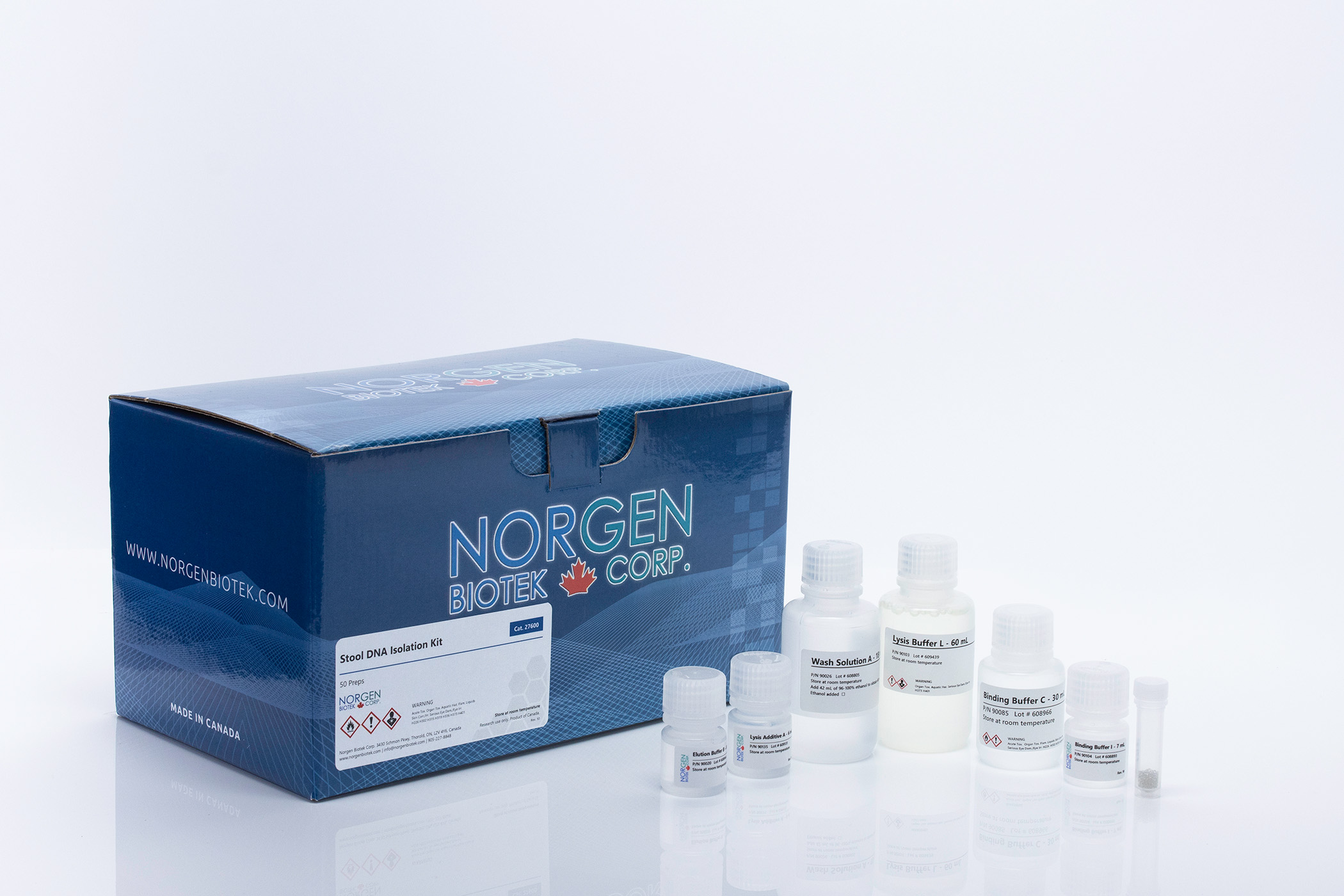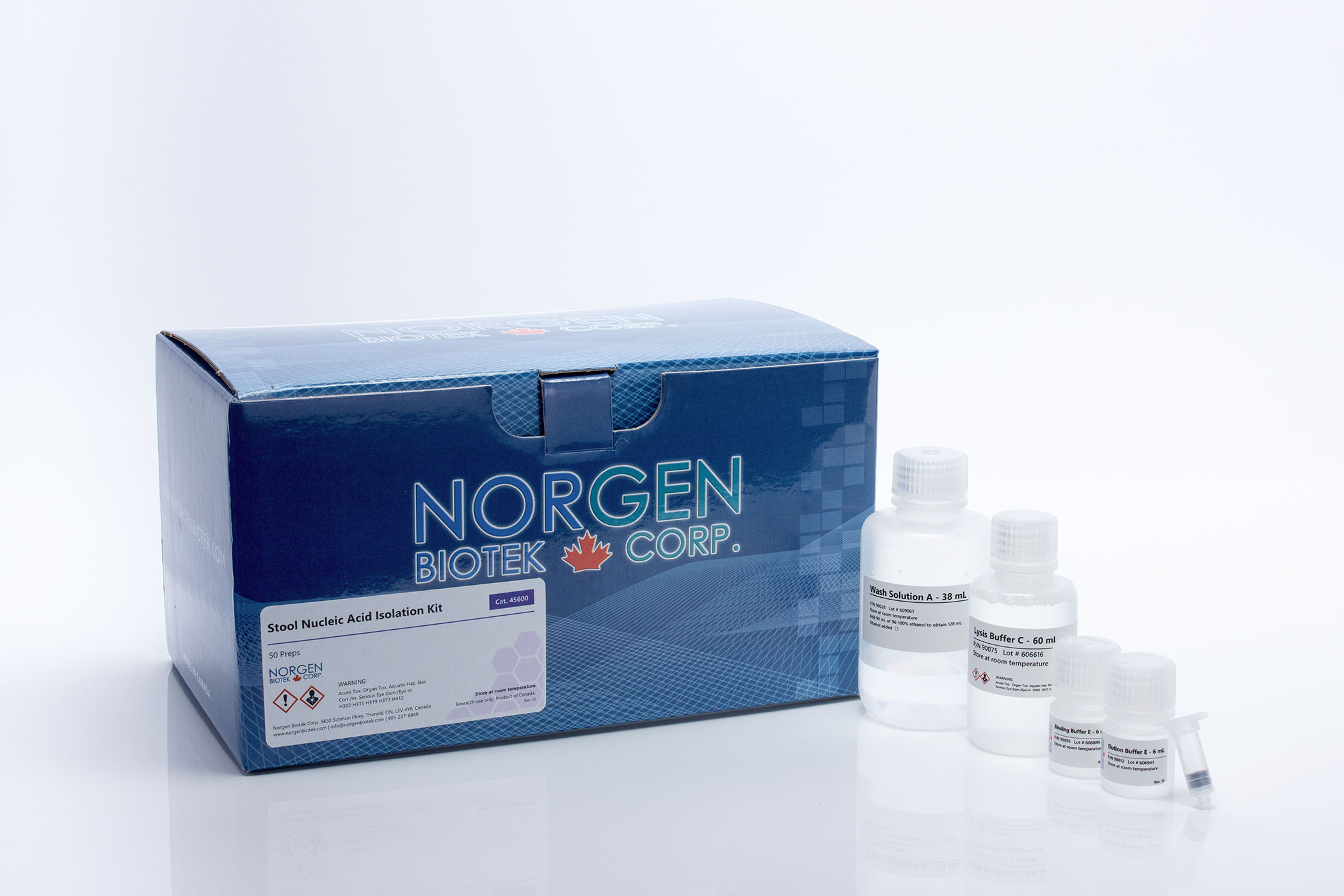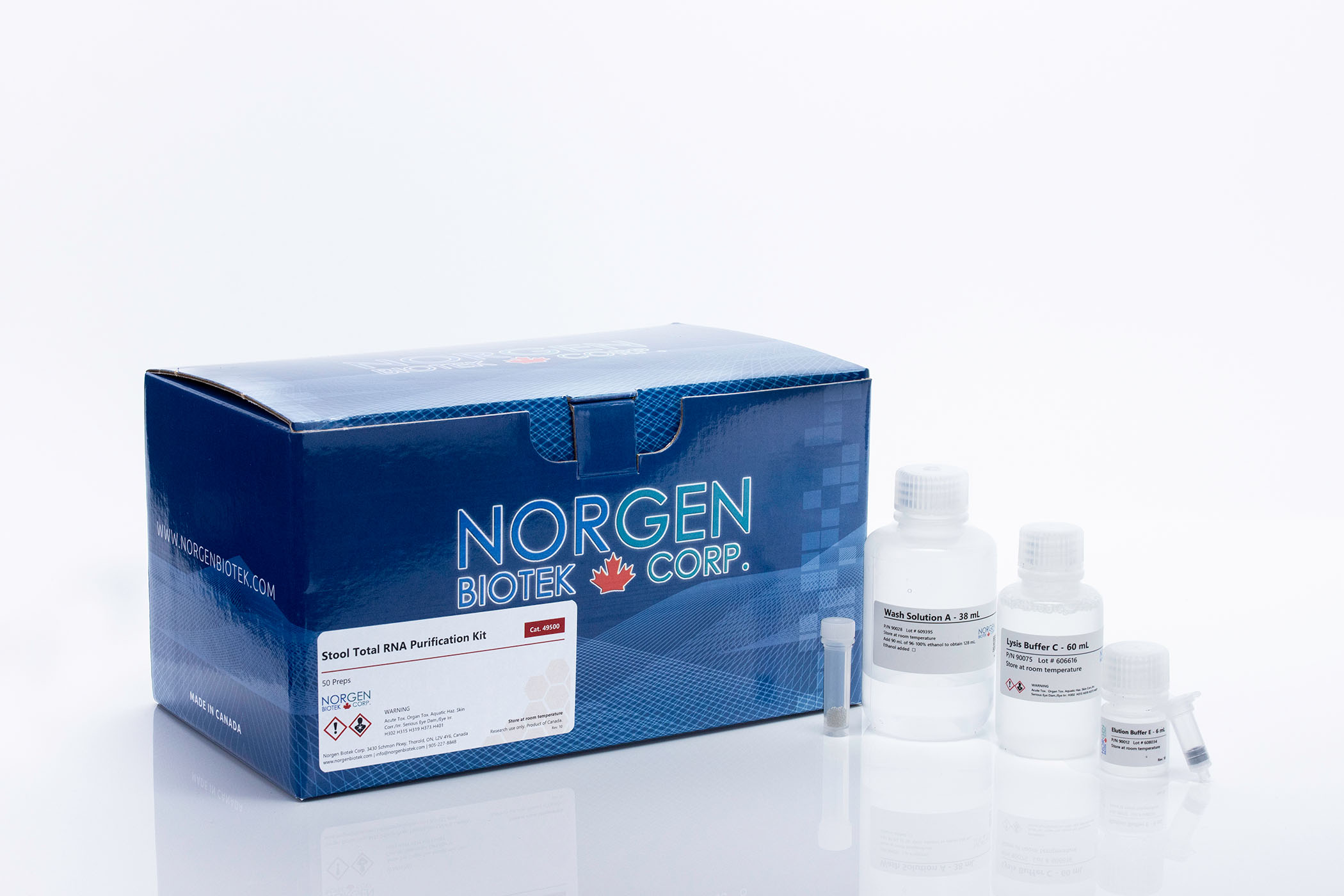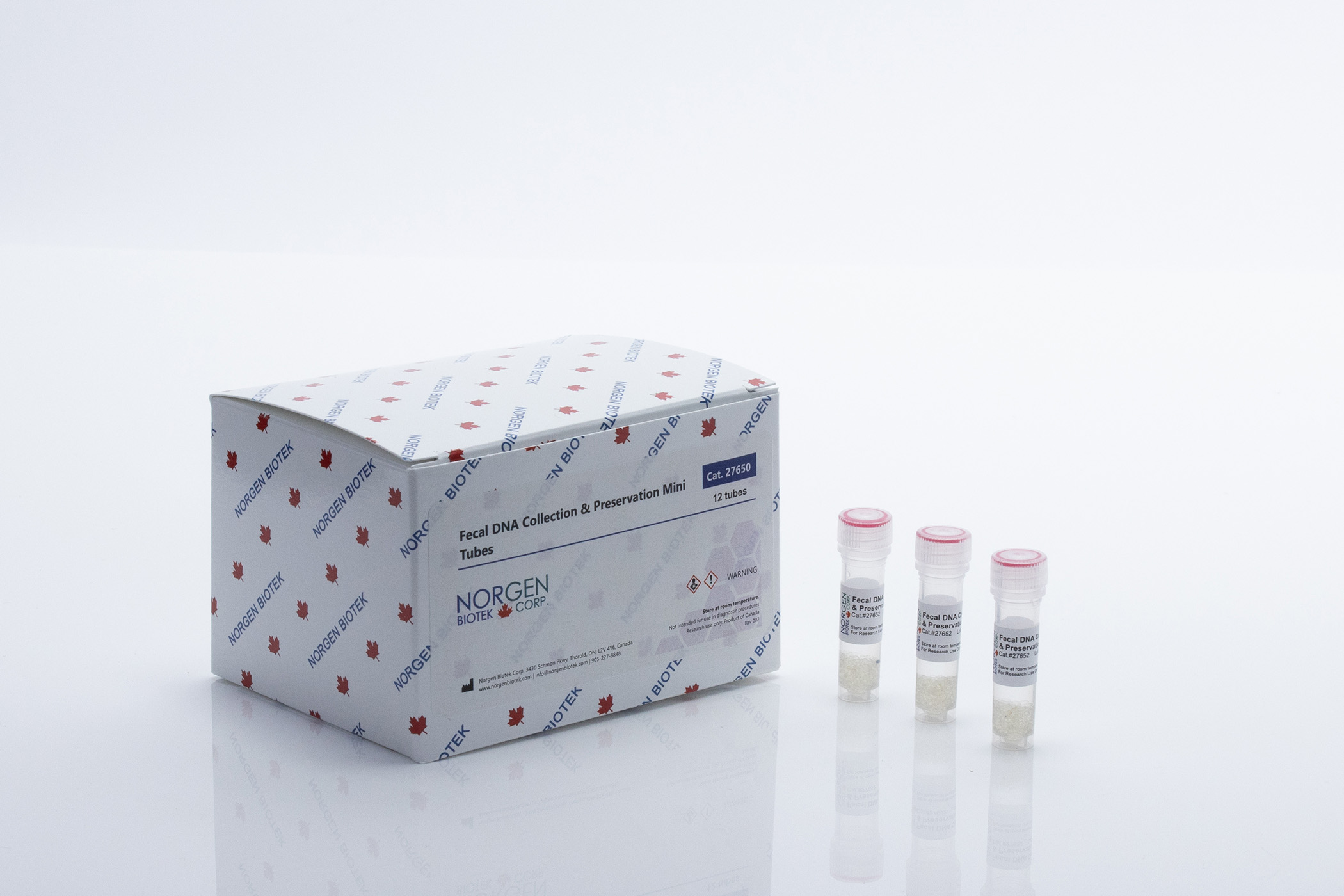Stool Nucleic Acid Collection and Preservation Devices Dx
For the collection and preservation of stool samples at ambient temperatures
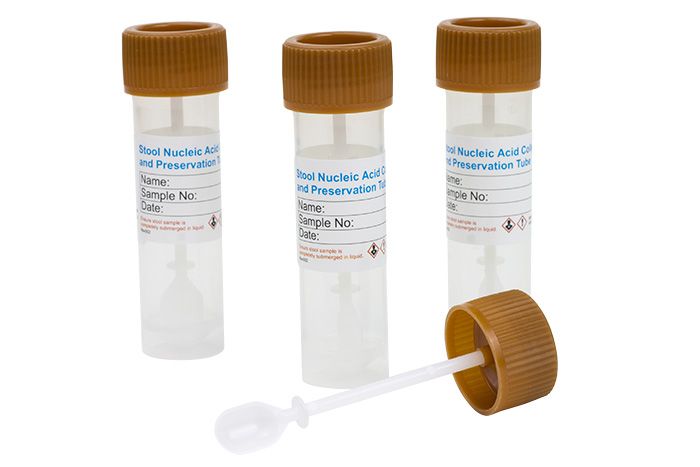
Intended for in vitro diagnostics use.
Research version available here
This product is not available for purchase in the United States.
Stool Nucleic Acid Collection and Preservation Devices Dx
For the collection and preservation of stool samples at ambient temperatures
Register today to receive an exclusive 15% off* on your first order.
Features and Benefits
-
CE-IVDR Marked:
Complies with European Commission Regulation (EU) No. 2017/746, ideal for in vitro diagnostics workflows.
-
Ambient Temperature Preservation:
Stable preservation for over 2 years for DNA and 7 days for RNA at room temperature.
-
Cost-Effective:
No cold shipping or storage required.
-
Sample Homogeneity:
Eliminates sample variability.
-
Inactivating:
Renders the sample non-infectious by preventing bacterial/fungal growth and inactivating viruses; eliminates odor.
-
Robust Preservation:
Effective over a range of temperature.
-
Freezer Compatible:
The tubes can be stored at -80°C to extend the stabilization of nucleic acids for longer periods.
DNA and RNA Isolation: Compatible with multiple isolation methods, including Norgen's Stool DNA, RNA and total nucleic acid isolation kits.
Microbiome profiling: A reliable and reproducible source of sample for microbial detection or metagenomics analysis via applications including PCR, NGS, microarray analysis and in vitro diagnostic use.
Details
Supporting Data
Figure 1. Norgen's Best-In-Class Preservation. Summary of community shifts in response to stabilizing solutions over a 14-day storage period. Bray-Curtis distance towards the reference for each patient grouped by stabilizing solution. Median and 5th-to-95th percentile ranges are shown for both interaliquot and interpatient variability (adapted from Plauzolles et al, 2022). Norgen is the most similar to frozen stool samples, over 11 other sample collection and storage methods..
Figure 2. Integrity of Total Stool DNA and RNA Isolated from Preserved Stool Samples. DNA and RNA were isolated from 200 µL of preserved stool from 4 different donors (lanes A to D) stored at room temperature at the indicated time points (DNA at 27 months and RNA at 7 days) using Norgen's Stool Nucleic Acid Isolation Kit (Cat# 45600). Next, 10 µL from the 75 µL eluted nucleic acid was loaded onto a gel for visual analysis. High integrity stool DNA was isolated from preserved stool samples that were stored at room temperature for 27 months, and high integrity RNA was isolated from stool samples stored for 7 days at ambient temperature. Lane M is Norgen's HighRanger 1 kb DNA Ladder (Cat. 11900).
Figure 3. Monitoring the DNA stability of Adenovirus (Ad5subE1) Spiked into Preserved Stool Samples using TaqMan Real-Time PCR Assay. Preserved stool samples were spiked with 6 x 109 pfu/mL of Adenovirus, and 200 µL samples were removed at the indicated time points. The stool DNA was then isolated using Norgen's Stool DNA Isolation Kit (Cat# 27600). Next, 2 µL of DNA template from each 50 µL of elution was used in a 20 µL PCR reaction to detect the Adenovirus DNA. The stool preservative was shown to stabilize Adenovirus DNA up to 21 weeks at ambient temperature, indicating that Norgen's Stool Nucleic Acid Collection and Preservation Tubes provide a safe and convenient sample transportation system.
Figure 4. Stool DNA is Stable over a Wide Range of Temperatures. Stool was collected from a healthy donor using Norgen's Stool Nucleic Acid Collection and Preservation Tubes. Samples were then incubated at ambient temperature (Fig. 3A) and 50°C (Fig. 3B) respectively. Next, 200 µL of the preserved and non-preserved stool was taken at day 1, 2, 4 and 7, and DNA was isolated using Norgen's Stool DNA Isolation Kit (Cat.# 27600). Lastly, 2 µL of elution was used in 20 µL of the real-time PCR reaction (SYBR Green I) using CFX96 Touch Real-Time PCR Detection System (Bio-Rad). The preserved stool generated lower Ct values when compared to the non-preserved stool at the various time points tested, indicating the high quality of the preserved DNA.
Figure 5. Stability of Human and Bacterial Genes over a 7 Day Period. Human (GAPDH), Gram-negative (16S rDNA) and two gastrointestinal Gram-positive bacterial genes were monitored from stool samples stored at ambient temperature with and without Norgen's stool preservative. DNA was isolated from 200 µL of preserved, non-preserved, and fresh stool samples on day 1, day 2, day 4 and day 7 using Norgen's Stool DNA Isolation Kit (Cat.# 27600). Next, 2 µL of elution was used in 20 µL of the real-time PCR reaction (SYBR Green I) using CFX96 Touch Real-Time PCR Detection System (Bio-Rad). All of the genes were shown to be preserved and stable over 7 days.
Figure 6. Hierarchical Clustering of Stool Samples at Phylum Level Under Different Storage Conditions. The microbial composition from the stool samples preserved in Norgen’s Stool Nucleic Acid Collection and Preservation Tubes (Cat. 45630, 45660, Dx45660) did not differ significantly to that of controls (fresh stool from Day 0 at RT) over a 2 day period while non-preserved stool samples showed a distance in the dendrogram from the original stool profile.
Figure 7. Difference In Top 5 Abundant Microorganisms at Phylum Level Compared to Fresh Stool (Day 0). Abundance of Firmicuties, Bacteroidetes and proteobacteria from the preserved stool sample was higher than non-preserved (NP) to the fresh stool after 2 days storage at RT, indicating that the originality of microorganism profile from the preserved are much closer to the fresh stool sample (Day 0).
Figure 8. Relative Abundance of Bacterial Genera Between Preserved And Non-preserved Stool Sample Stored at RT For 2 Days. Preserved stool sample using Norgen’s Stool Nucleic Acid Collection and Preservation Tubes (Cat. 45630, 45660,Dx45660) showed closed relativeness to the fresh stool sample (Day 0).
Figure 9. Correlation between duplicate bacterial metagenomic reads using (A) Fresh stool (day 0) and preserved stool at RT for 2 days and (B) Fresh stool (day 0) and non-preserved stool at RT for 2 days. A greater R2 was observed for Fresh stool (day 0) and preserved stool, suggestive of higher consistency between fresh stool sample and preserved stool sample
|
Kit Specifications
|
|
|
Stool Input
|
2 g
|
| Stability of Stool Nucleic Acids at Room Temperature |
2 years for DNA
7 days for RNA* |
* The RNA stability will be vary depending on the samples
Stool Nucleic Acid Collection and Preservation Devices Dx - 50 Contents:
Kit Components | Cat. Dx45660 |
|---|---|
Stool Nucleic Acid Collection and Preservation Devices Dx | 50 |
Product Insert | 1 |
Stool Nucleic Acid Collection and Preservation Device Dx Contents:
Kit Components | Contents |
|---|---|
Stool Nucleic Acid Collection and Preservation Tube Dx filled with preservative | 1 |
Insert Card | 1 |
Documentation
Purification and Detection of Bacterial RNA From Preserved Stool Samples - Application Note
Immediate Viral Inactivation Using Norgen’s Stool Nucleic Acid Preservative
Gut Microbiome Diversity: Comparison of Stool DNA Preservation Methods

